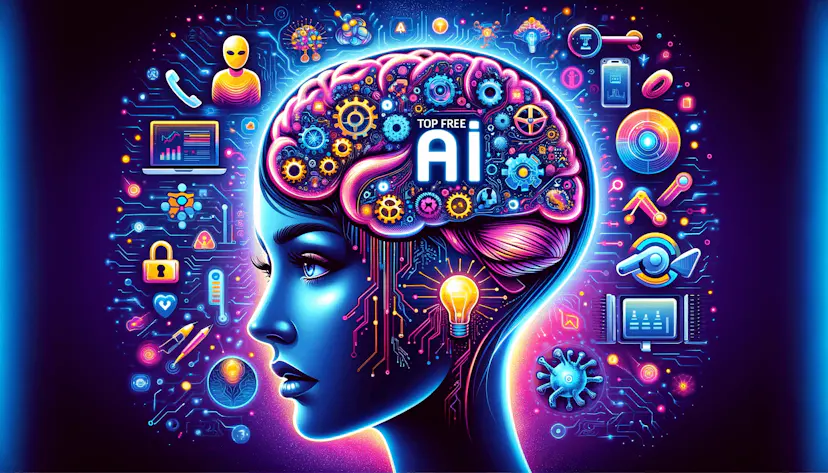Humanize AI Generated Content: The Ultimate Guide for Engaging Text

Understanding AI-Generated Content
The integration of AI-generated content has revolutionized the way businesses approach content creation. This form of content is created entirely by AI algorithms, without any human intervention. According to statistical data, 52% of business leaders are currently using AI content generation tools as part of their content marketing strategy, and this number is expected to rise to 64.7% by the end of 2023. Moreover, more than 12% of businesses use AI for content creation, with 44% utilizing AI technologies to lower operational costs.
Introduction to AI-Generated Text
The impact of AI on content creation has been substantial. It has streamlined the process and enabled businesses to produce a large volume of content efficiently. However, it's crucial to understand the advantages and disadvantages associated with AI-generated content. While it offers scalability and cost-effectiveness, there are concerns about originality and authenticity.
Advantages and Disadvantages of AI-Generated Content
AI-generated text presents several advantages such as increased productivity, reduced costs, and the ability to generate large volumes of content rapidly. On the other hand, there are concerns regarding plagiarism and maintaining a human touch in the content.
Understanding the Basics of AI-Generated Text
To add to that, AI-generated text is a powerful tool that can be used for various purposes including blog posts, social media updates, product descriptions, and more. The technology behind this type of content has advanced significantly in recent years.
How AI Humanizing Tools Work
In order to bridge the gap between machine-generated text and human-like communication, AI humanizing tools have emerged as invaluable resources for businesses seeking to add a personal touch to their automated content.
BypassAI: A Quality AI Humanizer Tool
One notable tool in this space is BypassAI which excels at ensuring that AI-generated text maintains a human tone effectively while preserving its intended goals.
Stealthwriter: Converting AI Text to Humanized Content
Stealthwriter is another prominent tool that seamlessly transforms machine-generated text into engaging humanized content.
The Role of AISEO AI Humanizer
AISEO's text converter tool bridges the gap between machine-generated text and authentic human-like communication. It ensures that humanize AI text effectively while maintaining quality standards.
Selecting the Right Humanizing Tool
Selecting the appropriate humanizing tool is an important decision to make in order to ensure that machine-generated text resonates with a human audience. When it comes to choosing between free and quality AI humanizer tools, it's essential to weigh the benefits and limitations associated with each option.

Evaluating Free AI Text Humanizer Tools
Benefits of Free Humanizing Tools
Free humanizing tools offer an accessible entry point for businesses looking to explore AI-humanized content. They provide an opportunity for organizations to experiment with humanization techniques without a financial commitment. Additionally, they can be beneficial for small-scale projects or individuals seeking basic humanization features.
Limitations of Free Humanizing Tools
While free AI text humanizer tools provide initial exposure to the concept of humanizing content, they often come with limitations in terms of advanced features and customization options. Businesses may encounter restrictions in achieving a truly personalized and tailored humanized output using free tools.
User-Friendly Features of Free Humanizing Tools
Despite their limitations, free humanizer tools typically boast user-friendly interfaces and straightforward functionalities. This makes them suitable for users who are new to the concept of AI-humanized content and seek a simplified approach to integrating human-like elements into their text.
Quality AI Humanizer Tools
When it comes to quality humanizer tools, businesses gain access to advanced features that significantly enhance the process of transforming machine-generated text into compelling, humanized content.
Importance of Quality Humanizing Tools
Quality AI humanizer tools prioritize authenticity and originality while ensuring that the essence of the message remains intact. They enable businesses to create engaging content that reflects a genuine human touch, thereby fostering stronger connections with their target audience.
Features to Look for in a Quality Humanizer Tool
Key features that distinguish quality humanizer tools include advanced customization options, nuanced tone adjustments, seamless integration with existing workflows, and comprehensive support for various content formats. These tools empower businesses to tailor their approach based on specific brand requirements and audience preferences.
BypassAI vs. AISEO AI Humanizer
When comparing two prominent names in the field—BypassAI and AISEO AI Humanizer, it's crucial for businesses to consider factors such as detection evasion capabilities, natural language emulation, ease of use, and adaptability across diverse content types.
Tips for Humanizing AI Content
Infusing human-like elements is essential to resonate with the audience and establish a genuine connection. Here are valuable tips for humanizing AI-generated text effectively:
Adding Anecdotes and Jokes
Impact of Humor on AI-Generated Content
Humor plays a pivotal role in humanizing AI-generated content by fostering an emotional connection with the user. It adds a touch of relatability and light-heartedness to the text, making it more engaging.
Crafting Engaging Anecdotes
Anecdotes inject personal experiences into AI-generated content, creating a sense of authenticity and resonance with the audience. They offer real-life examples that captivate the reader's attention and make the content more compelling.
The Role of Jokes in Humanizing AI Content
While incorporating jokes into AI-generated content, it's crucial to ensure that they align with the context and maintain relevance. Jokes can add an element of entertainment, but it's important to avoid canned or overly memorized humor that might detract from the authenticity of the text.
Incorporating Visuals
Importance of Visual Elements
Visuals such as images, infographics, and videos enhance the overall appeal of AI content by providing a multi-sensory experience for the audience. They break up textual monotony and convey information in a visually appealing manner.
Types of Visuals to Enhance AI Content
Utilize diverse visual elements including charts, graphs, illustrations, and relevant photographs to complement AI-generated text. Each type of visual serves a unique purpose in conveying information effectively while maintaining engagement.
Best Practices for Adding Visuals to AI Text
When integrating visuals into AI-generated content, ensure that they align with the narrative and contribute meaningfully to the message being conveyed. Additionally, optimize visuals for various platforms to cater to different user preferences across digital channels.
Optimizing for Search Engines
Understanding SEO for Humanized AI Content
Optimizing humanized AI content for search engines involves strategically incorporating relevant keywords, structuring content for readability, and adhering to SEO best practices. This ensures that the content gains visibility and reaches its intended audience effectively.
Tips for SEO Optimization in AI-Generated Text
Content creators should focus on meticulous keyword research, meta descriptions optimization, internal linking strategies, and mobile-friendly formatting when optimizing AI-generated text for search engines. These practices enhance discoverability while catering to user search intent.
Tools for SEO Optimization in Humanized AI Content
Leverage advanced tools designed specifically for optimizing humanized AI content, such as BypassAI's integrated SEO features that facilitate seamless keyword integration and metadata enhancement within humanized text.
Adding Personal Touch
Adding a personal touch is essential to establish a genuine connection with the audience. By incorporating personal instances and emphasizing a human tone, businesses can create valuable and engaging content that resonates with readers.
Infusing Personal Instances
Impact of Personal Stories in AI Content
Adding personal experiences and stories to AI-generated content has a profound impact on its effectiveness. It makes the content more engaging, impactful, and memorable for the readers. Incorporating personal anecdotes helps establish a personal brand, build a connection with the audience, and create a blog that truly stands out.
Crafting Compelling Personal Instances
Crafting compelling personal instances involves sharing authentic experiences that align with the message being conveyed. These instances should captivate the reader's attention and evoke relatability while maintaining relevance to the overall content.
Dos and Don'ts of Sharing Personal Experiences in AI Content
When sharing personal experiences in AI-generated content, it's important to ensure authenticity and relevance. Dos include crafting genuine stories that resonate with the audience, while don'ts involve avoiding overly promotional or irrelevant personal instances that may detract from the value of the content.
Iterative Approach to Humanizing AI Content
Adopting an iterative approach is essential for refining and enhancing humanized AI content over time. This method involves continuous improvement based on audience feedback and evolving industry standards.
The Iterative Process of Humanizing AI-Generated Text
Iterative humanization encompasses multiple rounds of refining and enhancing AI-generated text, ensuring that each iteration adds depth, authenticity, and relatability to the content.
Continuous Improvement in Humanized AI Content
By consistently refining humanized AI content, businesses can elevate its quality, relevance, and resonance with the audience. This ongoing improvement process aligns with evolving consumer preferences and market dynamics.
Adapting to Audience Feedback in AI Content
Feedback from the audience serves as a guiding force for adapting and enhancing humanized AI content. Businesses can leverage audience insights to tailor their approach, address preferences, and deliver content that genuinely resonates with readers.
What's Next?
The ethical implications of using AI in content creation are complex. Marketers need to understand these implications thoroughly due to concerns related to bias, plagiarism, intellectual property rights misuse, misinformation generation potential, fake news dissemination risks associated with AI-driven content generators. It is crucial for businesses to navigate these ethical considerations responsibly while leveraging AI technology for content creation.
About the Author: Quthor, powered by Quick Creator, is an AI writer that excels in creating high-quality articles from just a keyword or an idea. Leveraging Quick Creator's cutting-edge writing engine, Quthor efficiently gathers up-to-date facts and data to produce engaging and informative content. The article you're reading? Crafted by Quthor, demonstrating its capability to produce compelling content. Experience the power of AI writing. Try Quick Creator for free at quickcreator.io and start creating with Quthor today!
See Also
Uncovering the Potential of Automated Writing with AI Word Humanizer
A 2024 Guide to AI-Generated Content (AIGC): Everything You Need to Know
Elevate Your SEO Game with AI-Enhanced Content Creation
Decoding AI-Generated Content (AIGC) and Its Future Outlook
Unveiling the AI Revolution: Trends in 2024 AIGC and Content Creation

